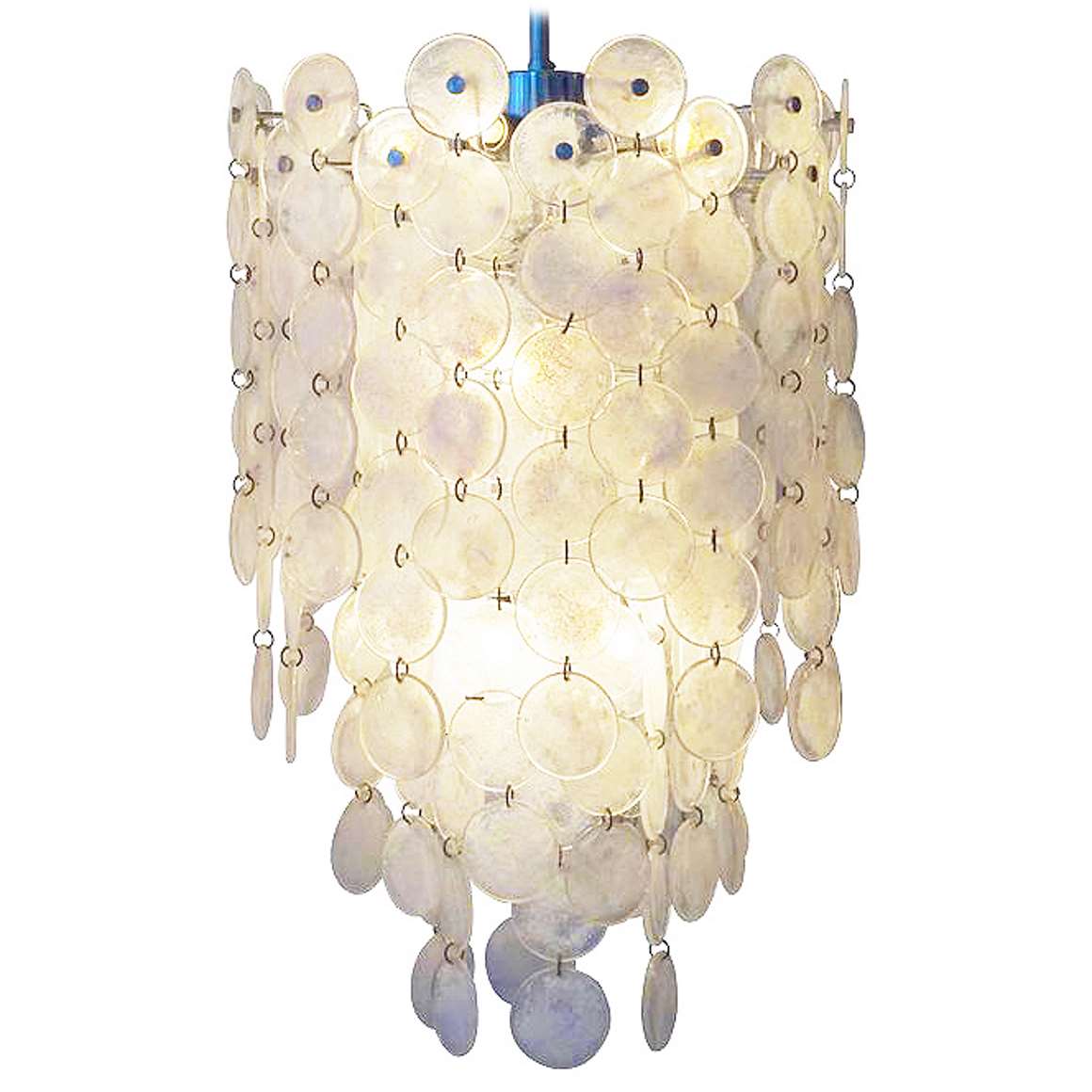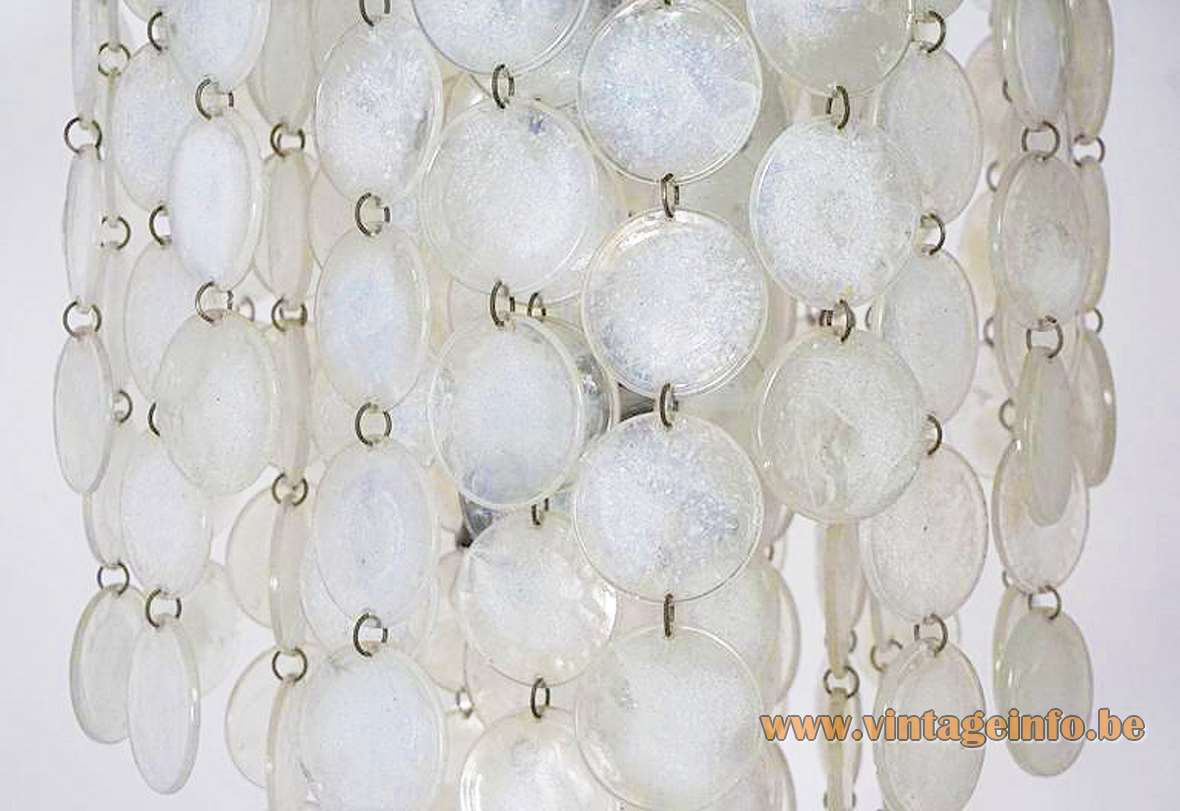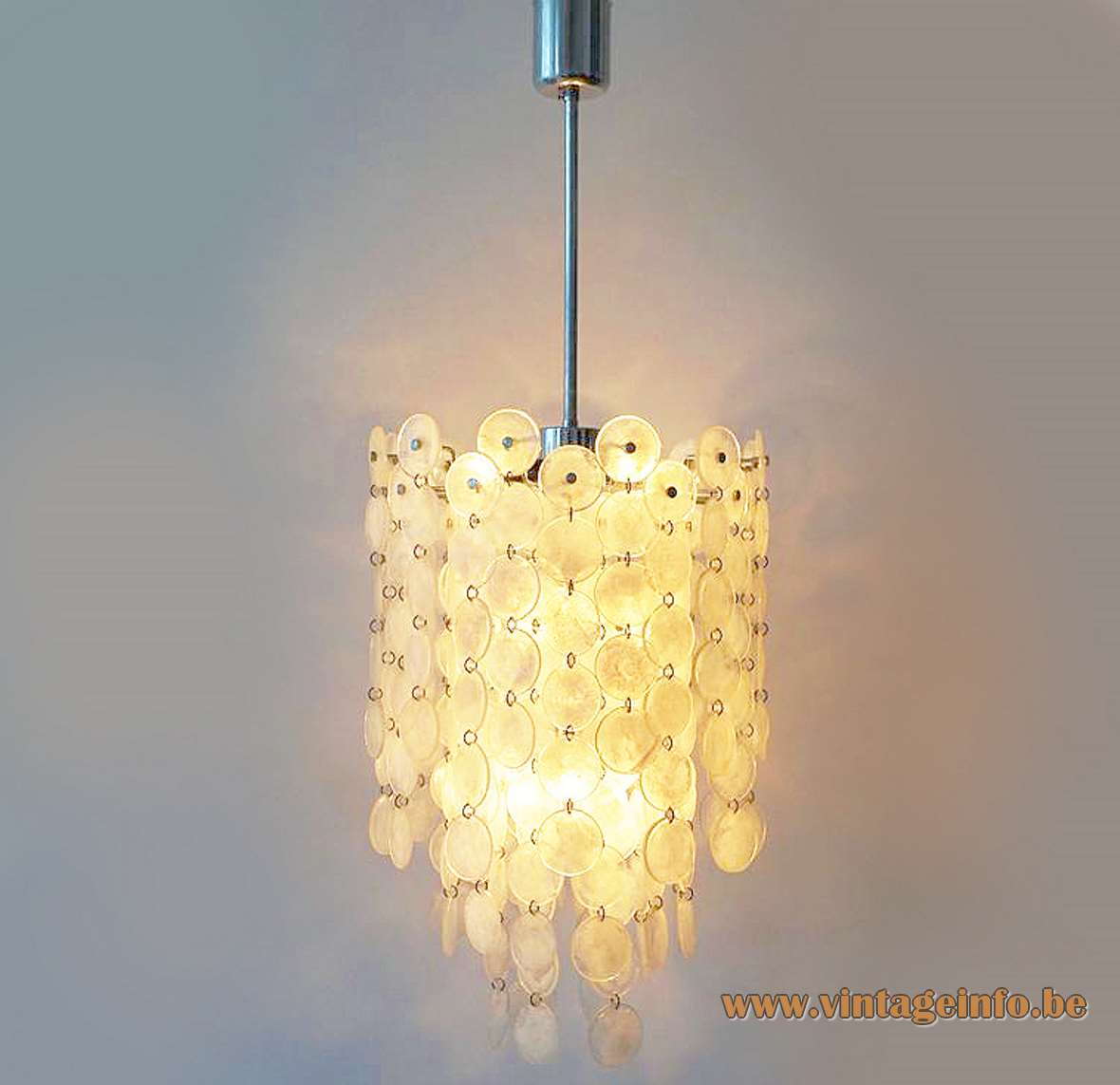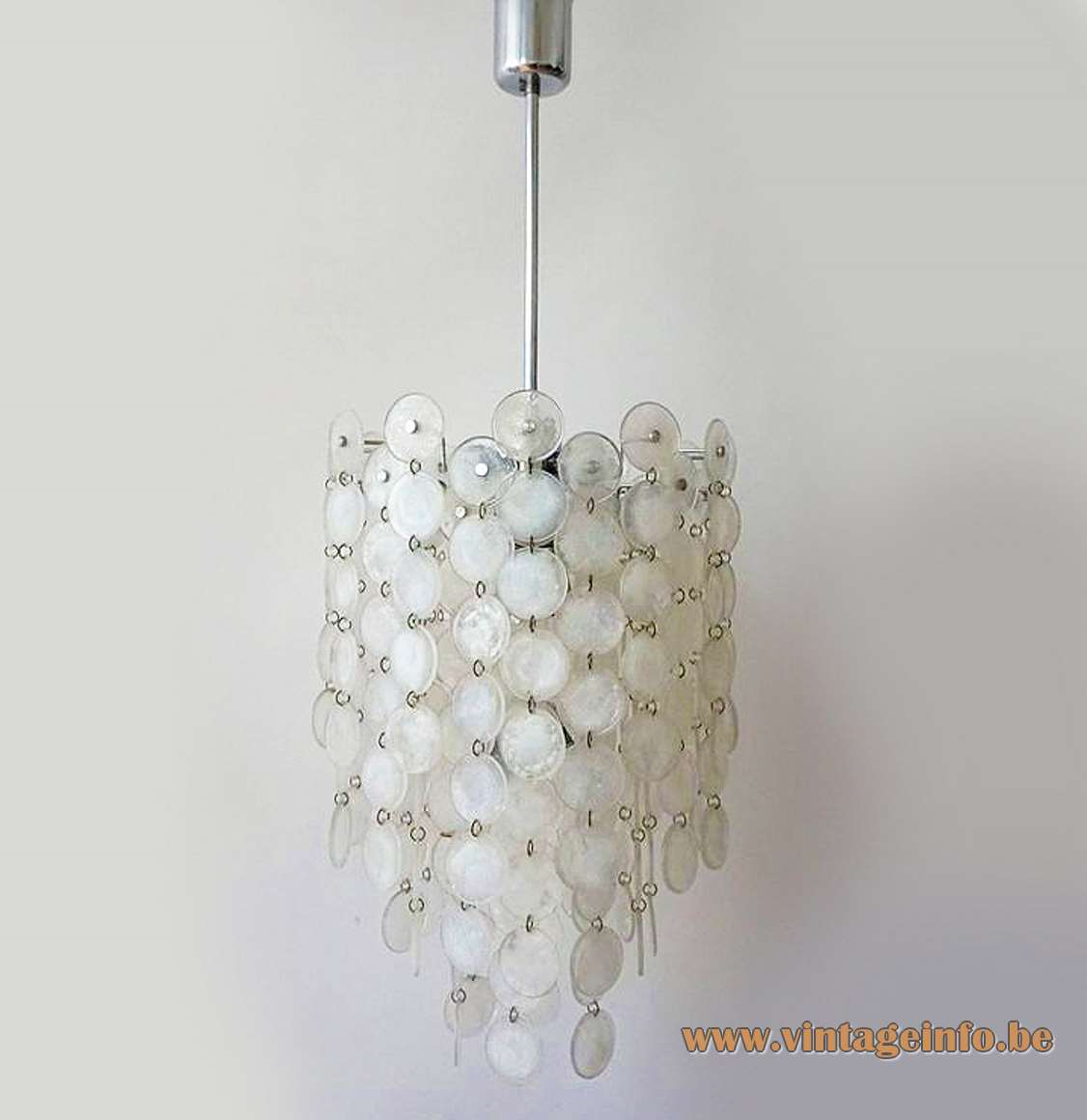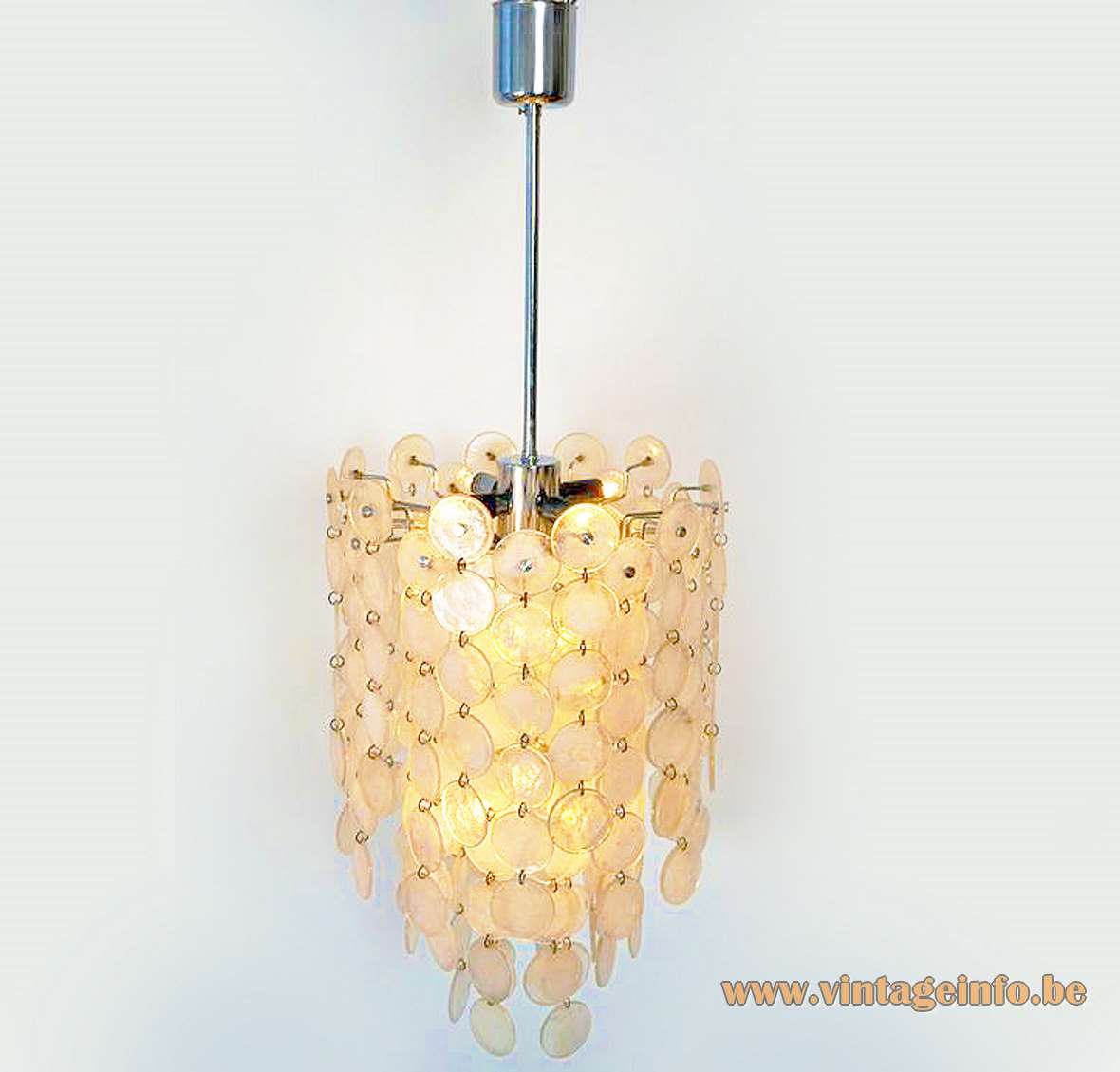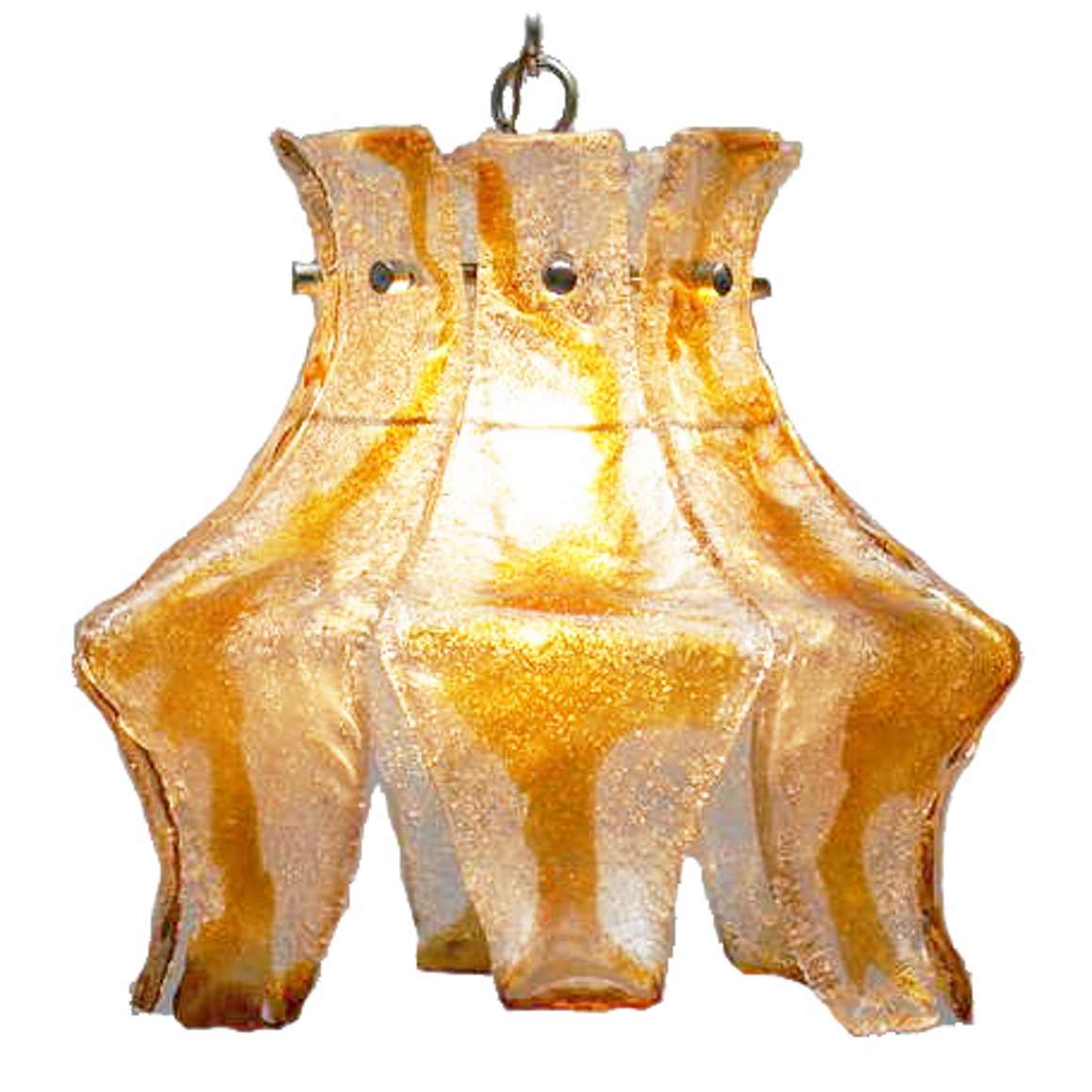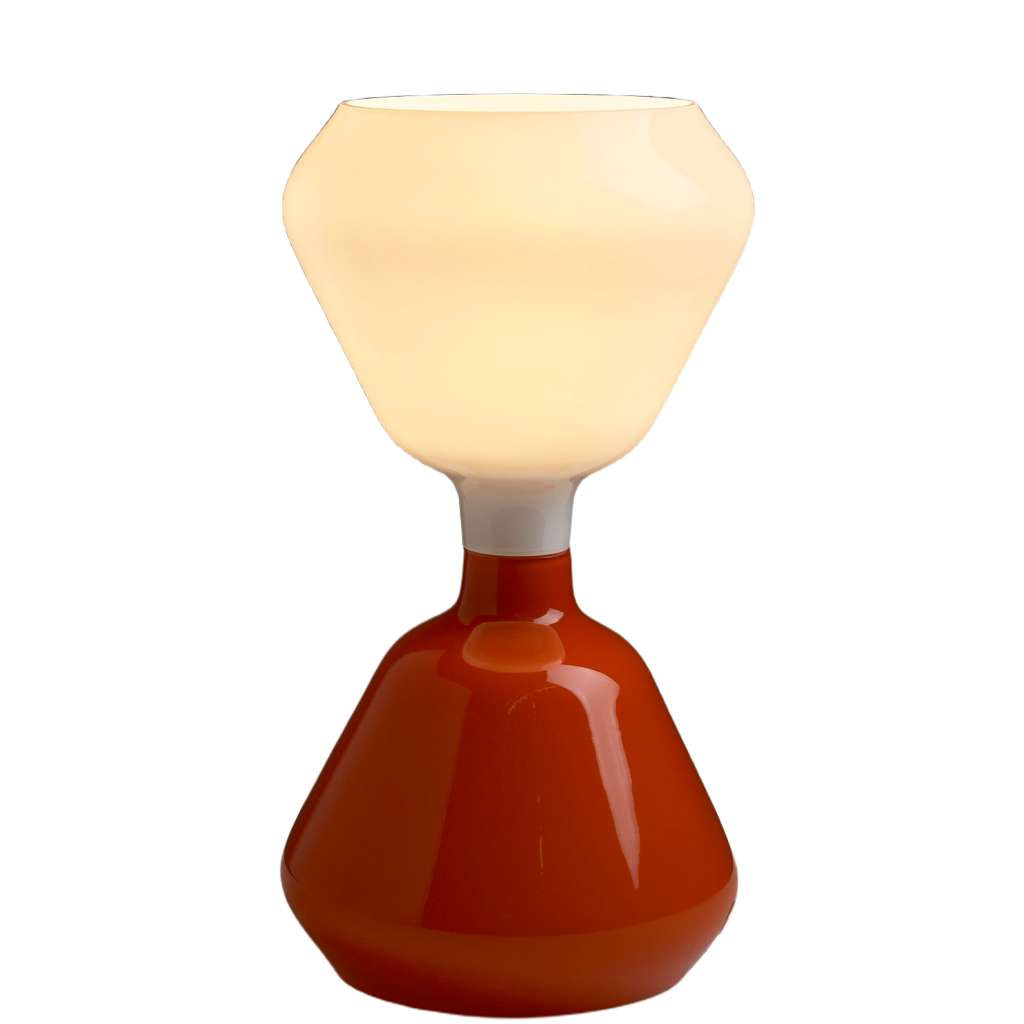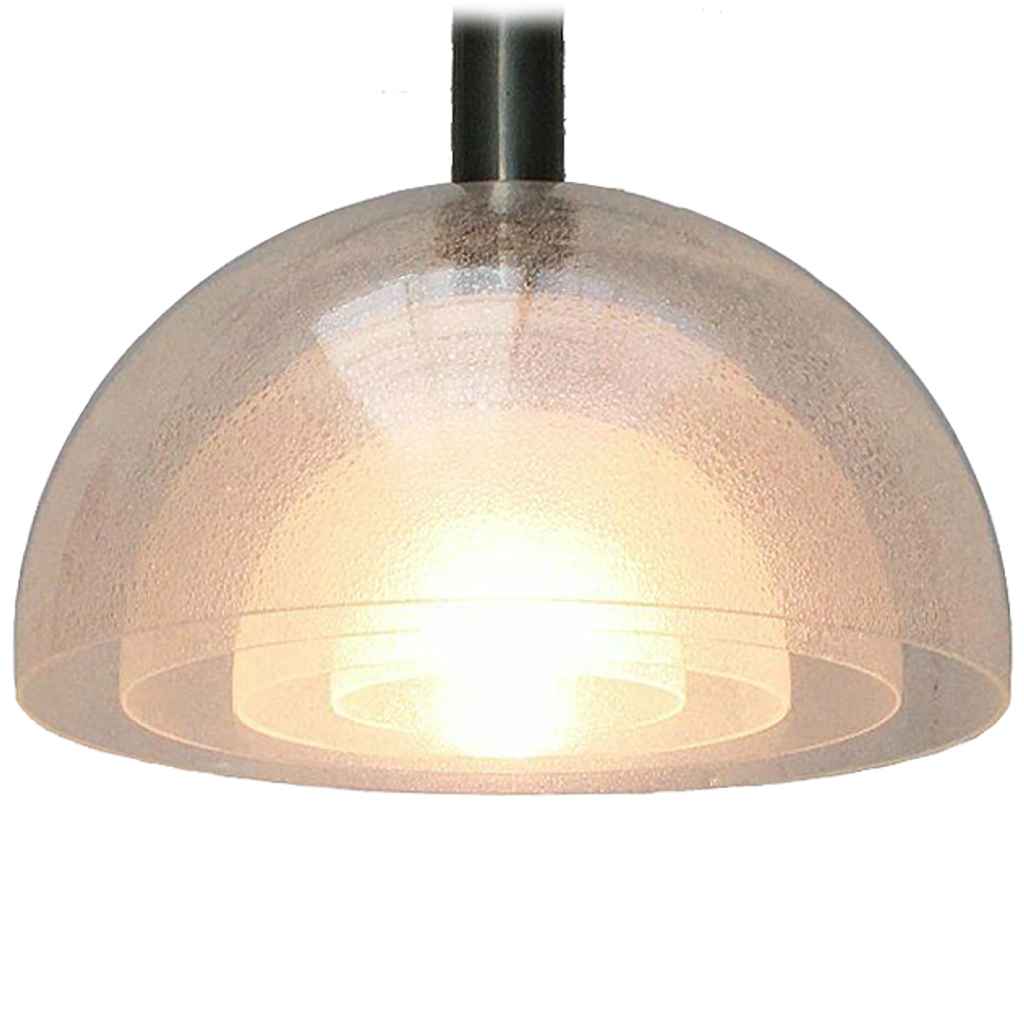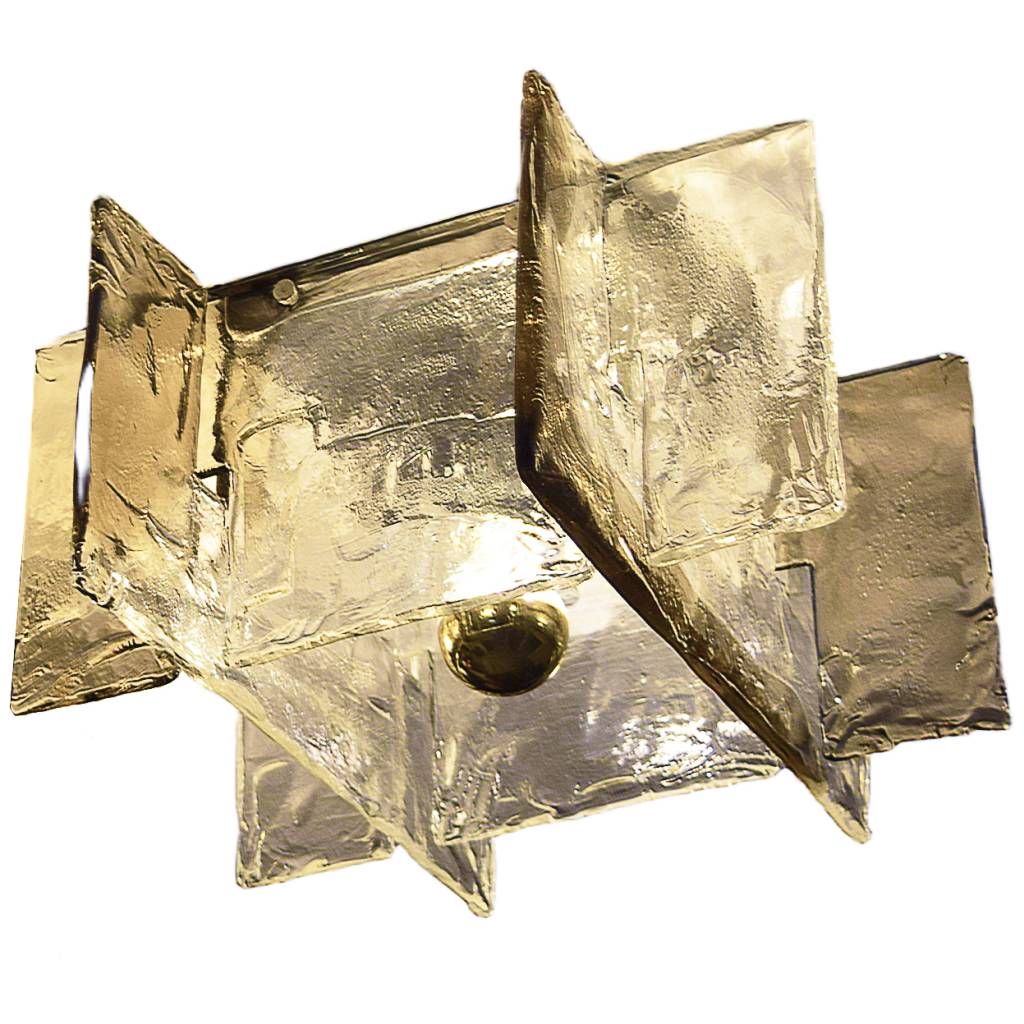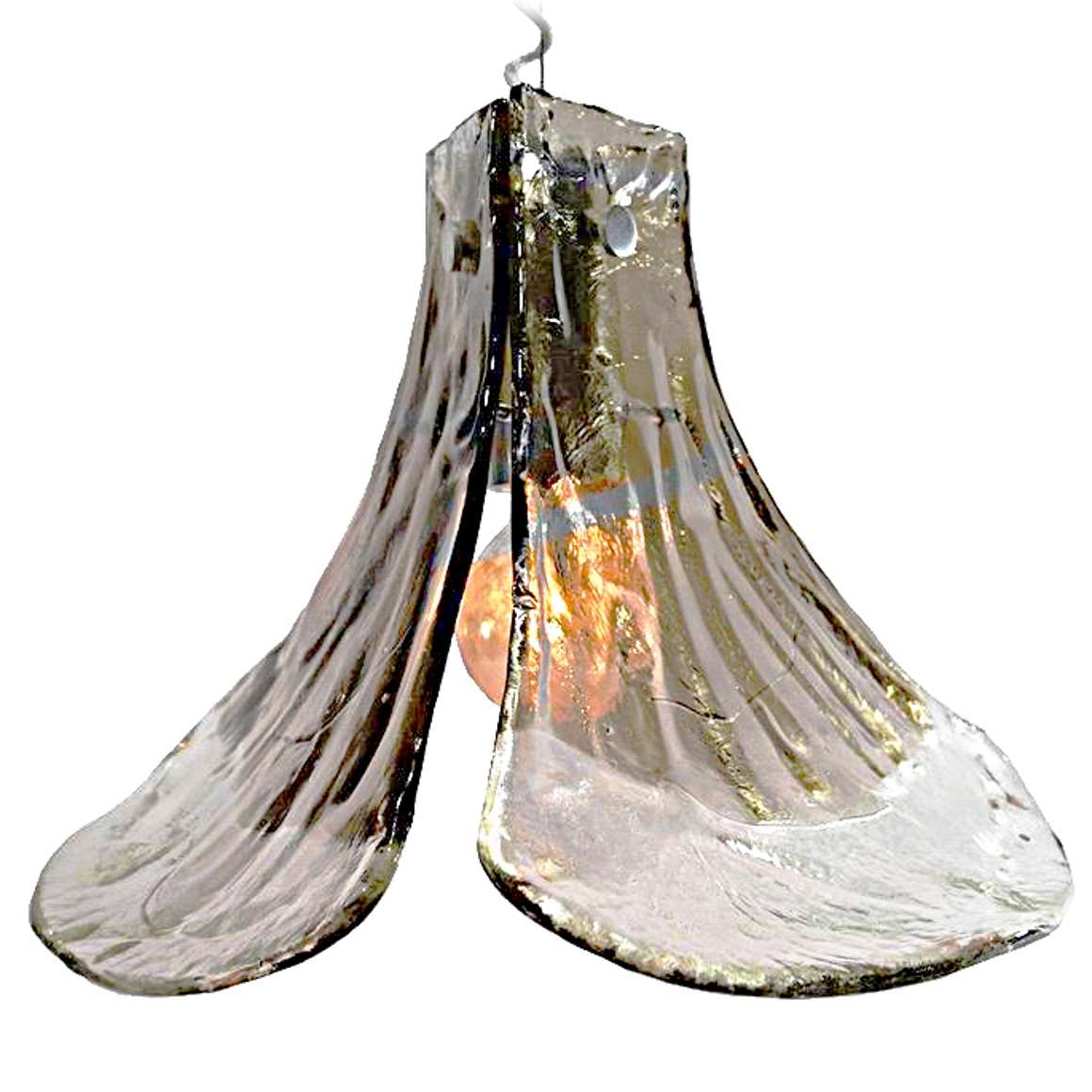Thousand Moons Chandelier
Materials: Round clear and white hand blown crystal small frosted glass discs lampshade. The discs are held together with small metal (chrome) rings. Ornamental chrome screws on top. Chromed metal (iron) frame, rod and canopy. 10 Bakelite E14 sockets.
Rod Length: 50 cm / 19.68”
Height: 60 cm / 23.62”
Width: ∅ 38 cm / 14.96”
Electricity: 10 bulbs E14, 10 x 40 watt maximum, 110/220 volt.
Any type of light bulb can be used, but clear or bright bulbs are preferred.
Period: 1970s – Mid-Century Modern.
Designer: To be appraised.
Manufacturer: To be determined.
Other versions: This Thousand Moons chandelier was made in a few variations and made as a wall lamp.
Do you have an idea about the producer of this chandelier? Please let us know through the contact form and help improve the websites exactitude. Your help is much appreciated.
Gino Vistosi – Carlo Nason
Contrary to popular belief, Gino Vistosi was not the designer of these large disc chandeliers. However, he did design a related model in the mid-1960s: the Torcello chandelier. This design featured oval discs in textured glass, produced in several colours. They were in production until the 1980s. The name Torcello refers to one of the earliest inhabited islands in the Venetian lagoon, often described as the mythical birthplace of Venice. A catalogue picture can be found over here.
On the island of Murano, and beyond, many lighting manufacturers – most of them now long gone – also produced disc chandeliers in this style. The discs were the same size as those designed by Carlo Nason for AV Mazzega. Nason ’s models included the LS 130, LS 131, LS 132, and LS 133 chandeliers, all executed in clear and opaline iridescent glass. (You can see an authentic example here in a catalogue image)
These chandeliers became a major success and remained in production for more than 30 years. Today, similar designs are still being produced — so be cautious if you are looking for a genuine vintage example.
Links (external links open in a new window)
Murano glass blowing – Wikipedia
Glass Museum on the Murano island
Vintageinfo
Many thanks to Frank from Flowermountain for the pictures.
